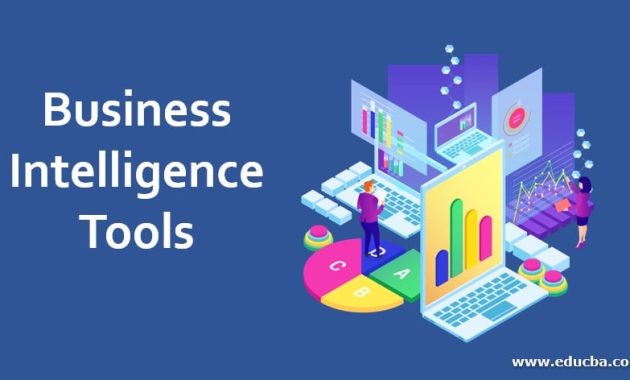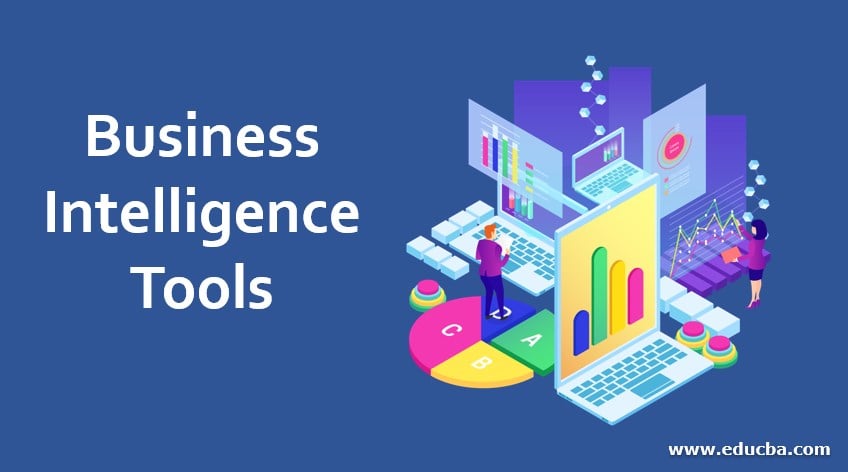
Business Intelligence Tools for Proactive Problem Solving: A Data-Driven Approach
In the fast-paced world of modern business, the ability to anticipate and address problems before they escalate is a crucial competitive advantage. This is where Business Intelligence (BI) tools come into play. These tools are not merely for reporting what has happened; they empower organizations to engage in proactive problem solving. They achieve this by providing the insights needed to identify potential issues, understand their root causes, and implement effective solutions. This article delves into the world of Business Intelligence tools, exploring how they are transforming the way businesses approach problem-solving.
The Evolution of Problem Solving in Business
Historically, problem-solving in business was often reactive. Issues would arise, and teams would scramble to find solutions. This approach was time-consuming, costly, and often ineffective. The advent of data analytics and Business Intelligence tools marked a significant shift. Companies could now analyze past performance, identify trends, and predict future challenges. This evolution has moved problem-solving from a reactive stance to a proactive one.
Understanding Business Intelligence Tools
Business Intelligence tools are software applications designed to collect, process, analyze, and visualize data from various sources. They transform raw data into actionable insights that inform decision-making. These tools encompass a wide range of functionalities, including data warehousing, data mining, online analytical processing (OLAP), and reporting dashboards. The primary goal is to provide users with a comprehensive understanding of their business operations.
Key Features of Effective Business Intelligence Tools
Several features are essential for Business Intelligence tools to be effective for proactive problem solving:
- Data Integration: The ability to connect to and integrate data from multiple sources, such as databases, spreadsheets, and cloud applications.
- Data Visualization: Powerful data visualization capabilities, including charts, graphs, and interactive dashboards, to present data in an easily understandable format.
- Data Analysis: Advanced analytical features, such as statistical analysis, predictive modeling, and data mining, to uncover hidden patterns and insights.
- Reporting and Dashboards: Customizable reports and dashboards that provide real-time visibility into key performance indicators (KPIs) and business metrics.
- Alerting and Notifications: Automated alerts and notifications that notify users of potential issues or anomalies in the data.
The Role of Data in Proactive Problem Solving
Data is the foundation of proactive problem solving. Business Intelligence tools rely on high-quality data to generate accurate insights. Organizations must invest in data governance and data quality initiatives to ensure the reliability and integrity of their data. This includes data cleansing, data validation, and data security measures. The more reliable the data, the more accurate the insights, leading to more effective proactive problem solving.
How Business Intelligence Tools Enable Proactive Problem Solving
Business Intelligence tools facilitate proactive problem solving in several ways:
- Early Warning Systems: By analyzing historical data, BI tools can identify trends and patterns that indicate potential problems. This allows businesses to implement preventative measures before issues arise.
- Predictive Analytics: Predictive modeling capabilities enable organizations to forecast future outcomes and identify potential risks. This foresight allows for proactive planning and resource allocation.
- Real-time Monitoring: Real-time dashboards provide continuous monitoring of key metrics, enabling businesses to quickly identify and respond to anomalies or deviations from expected performance.
- Root Cause Analysis: BI tools help users drill down into data to identify the root causes of problems. This allows for more effective and targeted solutions.
Case Studies: Business Intelligence Tools in Action
Several companies have successfully leveraged Business Intelligence tools for proactive problem solving. These case studies demonstrate the tangible benefits of a data-driven approach.
Example 1: Retail Chain: A large retail chain used BI tools to analyze sales data and identify underperforming stores. By analyzing factors such as location, demographics, and product mix, they could proactively adjust inventory levels and marketing strategies to improve sales performance.
Example 2: Manufacturing Company: A manufacturing company used BI tools to monitor production processes and identify potential equipment failures. By analyzing data from sensors and other sources, they could predict when equipment was likely to fail and schedule preventative maintenance, minimizing downtime and production losses.
Example 3: Healthcare Provider: A healthcare provider used BI tools to analyze patient data and identify patients at risk of readmission. By proactively intervening with targeted care plans, they reduced readmission rates and improved patient outcomes.
Choosing the Right Business Intelligence Tools
Selecting the right Business Intelligence tools is crucial for success. Several factors should be considered:
- Business Needs: Identify the specific business problems you want to solve and the types of data you need to analyze.
- Data Sources: Ensure the tool can connect to and integrate data from your existing data sources.
- User Experience: Choose a tool with an intuitive and user-friendly interface.
- Scalability: Select a tool that can handle your current data volume and scale as your business grows.
- Cost: Consider the total cost of ownership, including software licensing, implementation, and training.
Implementing Business Intelligence Tools for Proactive Problem Solving
Implementing Business Intelligence tools requires a strategic approach. Here are some key steps:
- Define Objectives: Clearly define your business goals and the specific problems you want to solve.
- Assess Data: Evaluate your existing data sources and identify any gaps or inconsistencies.
- Choose the Right Tools: Select the Business Intelligence tools that best meet your needs.
- Data Integration: Integrate data from your various sources into the BI tool.
- Develop Dashboards and Reports: Create custom dashboards and reports to visualize your data and track key metrics.
- Train Users: Provide training to your employees on how to use the BI tools effectively.
- Monitor and Evaluate: Continuously monitor the performance of your BI tools and make adjustments as needed.
The Future of Business Intelligence and Proactive Problem Solving
The future of Business Intelligence is bright, with ongoing advancements in areas such as artificial intelligence (AI) and machine learning (ML). AI-powered BI tools can automate data analysis, identify hidden patterns, and provide even more accurate predictions. This will further enhance the ability of businesses to engage in proactive problem solving and gain a competitive edge. As technology advances, the capabilities of Business Intelligence tools will only increase, offering even greater opportunities for businesses to make data-driven decisions and improve their performance. The integration of AI and ML will allow for more sophisticated predictive analytics and automation, enabling businesses to anticipate problems with even greater accuracy and efficiency. This evolution will transform the way businesses operate, making them more resilient, agile, and responsive to change.
Benefits of Proactive Problem Solving with Business Intelligence
The benefits of using Business Intelligence tools for proactive problem solving are numerous:
- Reduced Costs: By identifying and addressing problems before they escalate, businesses can minimize costs associated with downtime, waste, and rework.
- Improved Efficiency: BI tools streamline data analysis and decision-making, leading to improved operational efficiency.
- Enhanced Customer Satisfaction: By anticipating and addressing customer needs, businesses can improve customer satisfaction and loyalty.
- Increased Revenue: Proactive problem solving can lead to increased sales, improved product development, and more effective marketing campaigns.
- Better Decision-Making: Data-driven insights empower businesses to make more informed and strategic decisions.
- Competitive Advantage: Businesses that embrace proactive problem solving are better positioned to compete in today’s dynamic market.
Conclusion: Embracing a Data-Driven Future
Business Intelligence tools are essential for businesses that want to move beyond reactive problem-solving and embrace a proactive, data-driven approach. By leveraging the power of data, organizations can anticipate challenges, identify opportunities, and make more informed decisions. As technology continues to evolve, the role of Business Intelligence tools in proactive problem solving will only become more critical. Businesses that invest in these tools and embrace a data-driven culture will be well-positioned to thrive in the years to come. The ability to transform raw data into actionable insights is no longer a luxury; it is a necessity for success. The future of business is data-driven, and Business Intelligence tools are the key to unlocking that future. By embracing these tools, businesses can gain a significant competitive advantage, improve their performance, and achieve their strategic goals.
Key Takeaways
Business Intelligence tools are vital for modern businesses. They enable proactive problem solving through data analysis. Effective BI tools offer advanced features and data integration. Data quality is crucial for accurate insights. Businesses can benefit from reduced costs and improved efficiency. Choosing the right tools and implementing them strategically is important. The future of BI involves AI and machine learning integration. Embrace a data-driven approach for success.
[See also: Choosing the Right BI Tool for Your Business]
[See also: Data Visualization Best Practices for Business Intelligence]
[See also: The Role of Data Governance in Business Intelligence]
[See also: Predictive Analytics: A Guide for Business Leaders]

